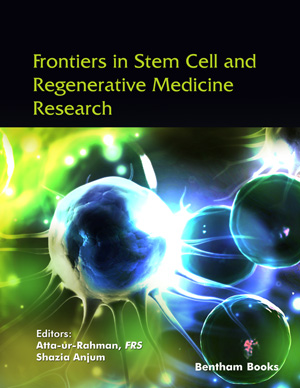
Abstract
Background: While bone marrow-derived mesenchymal stromal cells (BM-MSCs) have been used for many years in bone tissue engineering applications, the procedure still has drawbacks such as painful collection methods and damage to the donor site. Dental pulp-derived stem cells (DPSCs) are readily accessible, occur in high amounts, and show a high proliferation and differentiation capability. Therefore, DPSCs may be a promising alternative for BM-MSCs to repair bone defects.
Objective: The aim of this study was to investigate the bone regenerative potential of DPSCs in comparison to BM-MSCs in vitro and in vivo.
Methods: In vitro investigations included analysis of cell doubling time as well as proliferation and osteogenic differentiation. For the in vivo study, 36 male NMRI nude mice were randomized into 3 groups: 1) control (cell-free mineralized collagen matrix (MCM) scaffold), 2) MCM + DPSCs, and 3) MCM + BMMSCs. Critical size 2 mm bone defects were created at the right femur of each mouse and stabilized by an external fixator. After 6 weeks, animals were euthanized, and microcomputed tomography scans (μCT) and histological analyses were performed.
Results: In vitro DPSCs showed a 2-fold lower population doubling time and a 9-fold higher increase in proliferation when seeded onto MCM scaffolds as compared to BM-MSCs, but DPSCs showed a significantly lower osteogenic capability than BM-MSCs. In vivo, the healing of the critical bone defect in NMRI nude mice was comparable among all groups.
Conclusion: Pre-seeding of MCM scaffolds with DPSCs and BM-MSCs did not enhance bone defect healing.
Keywords: Dental pulp-derived stem cells, bone marrow-derived mesenchymal stromal cells, critical bone defect, mouse model, bone tissue engineering, bone regeneration.
Graphical Abstract
[http://dx.doi.org/10.1002/jcp.25940] [PMID: 28369866]
[http://dx.doi.org/10.1073/pnas.240309797] [PMID: 11087820]
[http://dx.doi.org/10.2147/SCCAA.S166759] [PMID: 32104005]
[http://dx.doi.org/10.1371/journal.pone.0039885] [PMID: 22768154]
[http://dx.doi.org/10.22203/eCM.v021a37] [PMID: 21710441]
[http://dx.doi.org/10.1002/term.220] [PMID: 19842108]
[PMID: 24459811]
[http://dx.doi.org/10.1016/j.bbrc.2018.04.213] [PMID: 29730288]
[http://dx.doi.org/10.1016/j.scr.2016.03.013] [PMID: 27155399]
[http://dx.doi.org/10.1016/j.cej.2007.09.029]
[http://dx.doi.org/10.1002/jor.24215] [PMID: 30628121]
[http://dx.doi.org/10.1002/jor.1100090310] [PMID: 2010842]
[http://dx.doi.org/10.3390/ijms20205015] [PMID: 31658685]
[http://dx.doi.org/10.3390/cells9020312] [PMID: 32012900]
[http://dx.doi.org/10.1080/09205063.2019.1619959] [PMID: 31159676]
[http://dx.doi.org/10.1126/sciadv.aay2387] [PMID: 32095526]
[http://dx.doi.org/10.1002/jbm.a.31082] [PMID: 17269144]
[http://dx.doi.org/10.22203/eCM.v033a09] [PMID: 28198985]
[http://dx.doi.org/10.4252/wjsc.v6.i3.288] [PMID: 25126378]
[http://dx.doi.org/10.1089/scd.2018.0119] [PMID: 30234437]
[http://dx.doi.org/10.1089/ten.tea.2015.0346] [PMID: 26896389]
[http://dx.doi.org/10.1016/0267-6605(91)90032-B]
[http://dx.doi.org/10.1016/j.jss.2012.06.039] [PMID: 22765996]
[http://dx.doi.org/10.1186/s13287-016-0276-5] [PMID: 26801095]
[http://dx.doi.org/10.3389/fimmu.2019.01191] [PMID: 31214172]
[http://dx.doi.org/10.1159/000047893] [PMID: 11455125]
[http://dx.doi.org/10.1016/j.biomaterials.2010.08.056] [PMID: 20863559]
[http://dx.doi.org/10.1186/s13287-018-0914-1] [PMID: 29921311]
[http://dx.doi.org/10.1016/j.biomaterials.2018.07.017] [PMID: 30036727]













